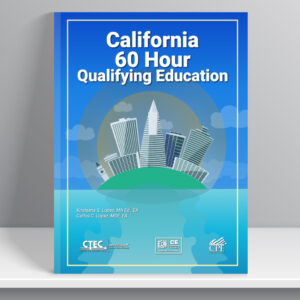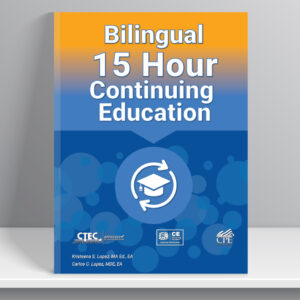Part I: Due Diligence and Penalties | Debida diligencia y sanciones
This chapter will explain how to determine who qualifies as a tax return preparer, what representation rights a preparer has, how that individual is bound by the Circular 230 guidelines, and what it means for a tax preparer to behave ethically and responsibly.
————————————————————–
Este capítulo explicará cómo determinar quién califica como preparador de declaraciones de impuestos, qué derechos de representación tiene un preparador, cómo esta persona está obligada por la guía de la Circular 230, y lo que significa para un/a preparador/a de impuestos comportarse de manera ética y responsable.
Part 2: Federal Tax Law | Leyes de impuestos federales
Schedule C | Anexo C
This chapter encompasses how the sole proprietor reports income. Sole proprietorship is the most popular business structure. A sole proprietorship is indistinguishable from its owner, and all income earned is reported by the owner. Schedule C is the reporting tool for most sole proprietors. Covered in the course is line by line instruction to complete the Schedule C.
————————————————————–
Este curso abarca cómo el propietario único informa los ingresos. La empresa unipersonal es la estructura empresarial más popular. Una empresa unipersonal es indistinguible de su propietario, y todos los ingresos obtenidos son reportados por el propietario. El Anexo C es la herramienta de informes para la mayoría de los propietarios únicos. Cubierto en el curso es la instrucción línea por línea para completar el Anexo C.
Schedule E | Anexo E
Rental income is any payment received for the use or occupation of real estate or personal property. The payment that is received is taxable to the taxpayer and is generally reported on Schedule E. Each Schedule E can report three properties. If the taxpayer has more than three properties, additional Schedule E’s would be used. Schedule E is not used to report personal income and expenses. The taxpayer should not use Schedule E to report renting personal property, that is not a business. To report other income, use Schedule 1, lines 8 – 24b.
————————————————————–
Los ingresos por alquiler son cualquier pago recibido por el uso u ocupación de bienes inmuebles o bienes personales. El pago que se recibe está sujeto a impuestos para el contribuyente y generalmente se informa en el Anexo E. Cada Anexo E puede reportar tres propiedades. Si el contribuyente tiene más de tres propiedades, se utilizarían el Anexo E adicional. El Anexo E no se utiliza para informar ingresos y gastos personales. El contribuyente no debe usar el Anexo E para reportar el alquiler de bienes personales, que no es un negocio. Para reportar otros ingresos, use el Anexo 1, líneas 8 – 24b.
Schedule F | Anexo F
Income received from the operation of a farm or from rental income from a farm is taxable. Farmers determine their taxable income from farming and related activities by using Schedule F. Profit or loss from farm income is first reported on Schedule F and then “flows” to Form 1040, Schedule 1, line 6. This course covers basic farm income and expenses.
————————————————————–
Los ingresos recibidos de la explotación de una explotación agrícola o de los ingresos por alquiler de una explotación están sujetos a impuestos. Los agricultores determinan sus ingresos imponibles de la agricultura y actividades relacionadas utilizando el Anexo F. Las ganancias o pérdidas de los ingresos agrícolas se informan primero en el Anexo F y luego “fluyen” al Formulario 1040, Anexo 1, línea 6. Este curso cubre los ingresos y gastos básicos de la granja.
Depreciation | Depreciación
Depreciation is an annual deduction that allows taxpayers to recover the cost or other basis of their business or investment property over a certain number of years. Depreciation is an allowance for the wear and tear, decline, or uselessness of a property and begins when a taxpayer places property in service for use in a trade or business. The property ceases to be depreciable when the taxpayer has fully recovered the property’s cost or other basis or when the property has been retired from service, whichever comes first. Depreciation is reported on Form 4562.
———————————————————————————–
La depreciación es una deducción anual que permite a los contribuyentes recuperar el costo u otra base de su propiedad comercial o de inversión durante un cierto número de años. La depreciación es una asignación por el desgaste, deterioro o inutilidad de una propiedad y comienza cuando un contribuyente pone una propiedad en servicio para su uso en una actividad o negocio. La propiedad deja de ser depreciable cuando el contribuyente ha recuperado completamente el costo de la propiedad u otra base o cuando esta ha sido retirada del servicio, lo que ocurra primero. La depreciación se informa en el Formulario 4562.
Part 3: Annual Federal Tax Refresher
The Annual Federal Tax Refresher (AFTR) course is intended to prepare the individual for the upcoming tax year. This course covers the latest tax law changes and current tax issues, as well as practice and professional responsibility. This course follows the 3 domains that are set annually by the IRS. They include:
- New Tax Law/Recent Updates
- General Review
- Practices, Procedures, and Professional Responsibility
At the end of this section, the student will be able to do the following:
- Understand limited representation rights.
- Recognize the annual inflation rates for the standard deduction.
- Comprehend the difference between business and hobby.
- Identify taxpayers who qualify for a federally declared disaster area.
————————————————————–
El curso anual de actualización de impuestos federales (AFTR) tiene la intención de preparar a la persona para el próximo año tributario. Este curso cubre los últimos cambios en la legislación tributaria y los problemas tributarios actuales, así como la práctica y la responsabilidad profesional. Cuando el profesional de impuestos no inscrito aprueba este curso con un 70% o más y completa 10 horas de ley tributaria y 2 horas de ética, podría calificar para estar en la base de datos nacional del IRS. Este curso sigue los 3 dominios que se establecen anualmente por el IRS. Entre ellos se incluyen:
- Nueva Ley Tributaria/Actualizaciones Recientes
- Revisión general
- Prácticas, Procedimientos y Responsabilidad Profesional
Al final de este curso, el estudiante podrá hacer lo siguiente:
- Comprender los derechos de representación limitados.
- Reconocer las tasas de inflación anual para la deducción estándar.
- Comprender la diferencia entre negocios y pasatiempos.
- Identificar a los contribuyentes que califican para un área de desastre declarada por el gobierno federal.
How do I obtain an AFSP-Record of Completion?
- Take a six (6) hour Annual Federal Tax Refresher (AFTR) course that covers filing season issues and tax law updates, as well as a knowledge-based comprehension test administered at the end of the course by the CE Provider.
- Take ten (10) hours of other federal tax law topics; and
- Take two (2) hours of ethics.
- Have an active preparer tax identification number (PTIN).
- Consent to adhere to specific practice obligations outlined in subpart B and section 10.51 of Treasury Department Circular No. 230.
How and when will I get my Record of Completion?
- After the PTIN renewal season begins in October, a Record of Completion will be generated to you once all requirements have been met, including renewal of your PTIN and consent to the Circular 230 obligations.
- If you have an online PTIN account, you will receive an email from [email protected] with instructions on how to sign the Circular 230 consent and receive your certificate in your online secure mailbox.
- If you do not have an online PTIN account, you will receive a letter with instructions for completing the application process and obtaining your certificate.
Who is exempt from taking the AFSP course?
- Anyone who passed the RTRP test administered by the IRS between November 2011 and January 2013.
- Established state-based return preparer program participants with testing (Oregon, California, and Maryland).
- Those who have passed SEE (Special Enrollment Exam) Part 1 within the past 2 years.
- VITA/TCE volunteers: quality reviewers and instructors with active PTINs.
- Other accredited tax-focused credential holders such as the following:
- The Accreditation Council for Accountancy.
- Taxation’s Accredited Business Accountant/Advisor (ABA).
- Accredited Tax Preparer (ATP).
I meet one of these exemptions. How do I obtain an AFSP – Record of Completion?
- Take fifteen (15) hours of continuing education, including:
- three (3) hours of federal tax law updates,
- ten (10) hours of other federal tax law topics and
- two (2) hours of ethics.
- Have an active preparer tax identification number (PTIN).
- Consent to adhere to specific practice obligations outlined in Subpart B and section 10.51 of Treasury Department Circular No. 230 PDF.
————————————————————–
¿Cómo obtengo un registro de finalización del AFSP?
- Tome un curso de Actualización Anual de Impuestos Federales (AFTR, por sus siglas en inglés) de seis (6) horas que cubra temas de la temporada de declaración y actualizaciones de la legislación fiscal, así como una prueba de comprensión basada en el conocimiento realizada al final del curso por el proveedor de CE.
- Tome tres (3) horas de otros temas de la Ley de Impuesto Federal; y
- Tome dos (2) horas de Ética.
- Tener un número de identificación fiscal de preparador (PTIN, por sus siglas en inglés) de 2019.
- Dar su consentimiento para cumplir con las obligaciones prácticas específicas descritas en la subsección B y la sección 10.51 de la Circular del Departamento del Tesoro No. 230.
¿Cómo y cuándo recibiré mi registro de finalización?
- Después de que comience la temporada de renovación del PTIN en octubre, se le generará un registro de finalización una vez que se hayan cumplido todos los requisitos, incluyendo la renovación de su PTIN y el consentimiento a las obligaciones de la circular 230.
- Si tiene una cuenta de PTIN en línea, recibirá un correo electrónico de [email protected] con instrucciones sobre cómo firmar el consentimiento de la circular 230 y recibir su certificado en su buzón seguro en línea.
- Si no tiene una cuenta PTIN en línea, recibirá una carta con las instrucciones para completar el proceso de solicitud y obtener su certificado.
¿Quién está exento de tomar el curso del AFSP?
- Cualquier persona que haya superado la prueba RTRP administrada por el IRS entre noviembre de 2011 y enero de 2013.
- Participantes establecidos del programa de preparador de declaraciones basado en el estado con pruebas (Oregón, California y Maryland).
- Aquellos que hayan aprobado la Parte 1 del SEE (Examen de Inscripción Especial) en los últimos 2 años.
- Voluntarios de VITA/TCE: revisores de calidad e instructores con PTIN activos.
- Otros titulares acreditados de credenciales centradas en impuestos, son los siguientes:
- El Consejo de Acreditación de Contabilidad.
- Contador/Asesor Comercial Acreditado (ABA, por sus siglas en inglés) de Tributación.
- Preparador de Impuestos Acreditado (ATP, por sus siglas en inglés).
Cumplo con una de estas exenciones. ¿Cómo obtengo un AFSP – Registro de Finalización?
- Tome quince (15) horas de educación continua, que incluyen:
- tres (3) horas de actualizaciones de la ley tributaria federal,
- diez (10) horas de otros temas de ley tributario federal y
- dos (2) horas de ética.
- Tener un número de identificación fiscal (PTIN) de preparador activo.
- Consentimiento para cumplir con las obligaciones prácticas específicas descritas en la Subparte B y la sección 10.51 de la Circular no. 230 PDF del Departamento del Tesoro.
| Course Details | Included in this course |
| Title: 2023 Bilingual Annual Filing Season Program Level: Intermediate Delivery Method: Self-studyTo earn certificate of completion: • Pass final exams with 70% (or better) |
• 3-Part Chapters (eBook) • Videos • Due Diligence Final Exam • Federal Final Exam • AFTR Final Exam |





